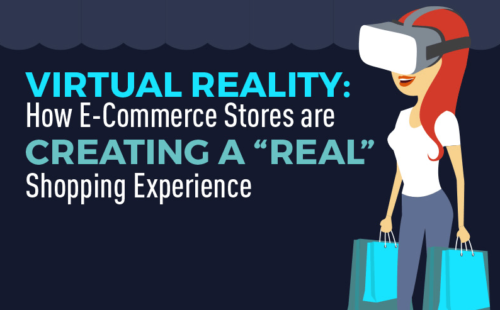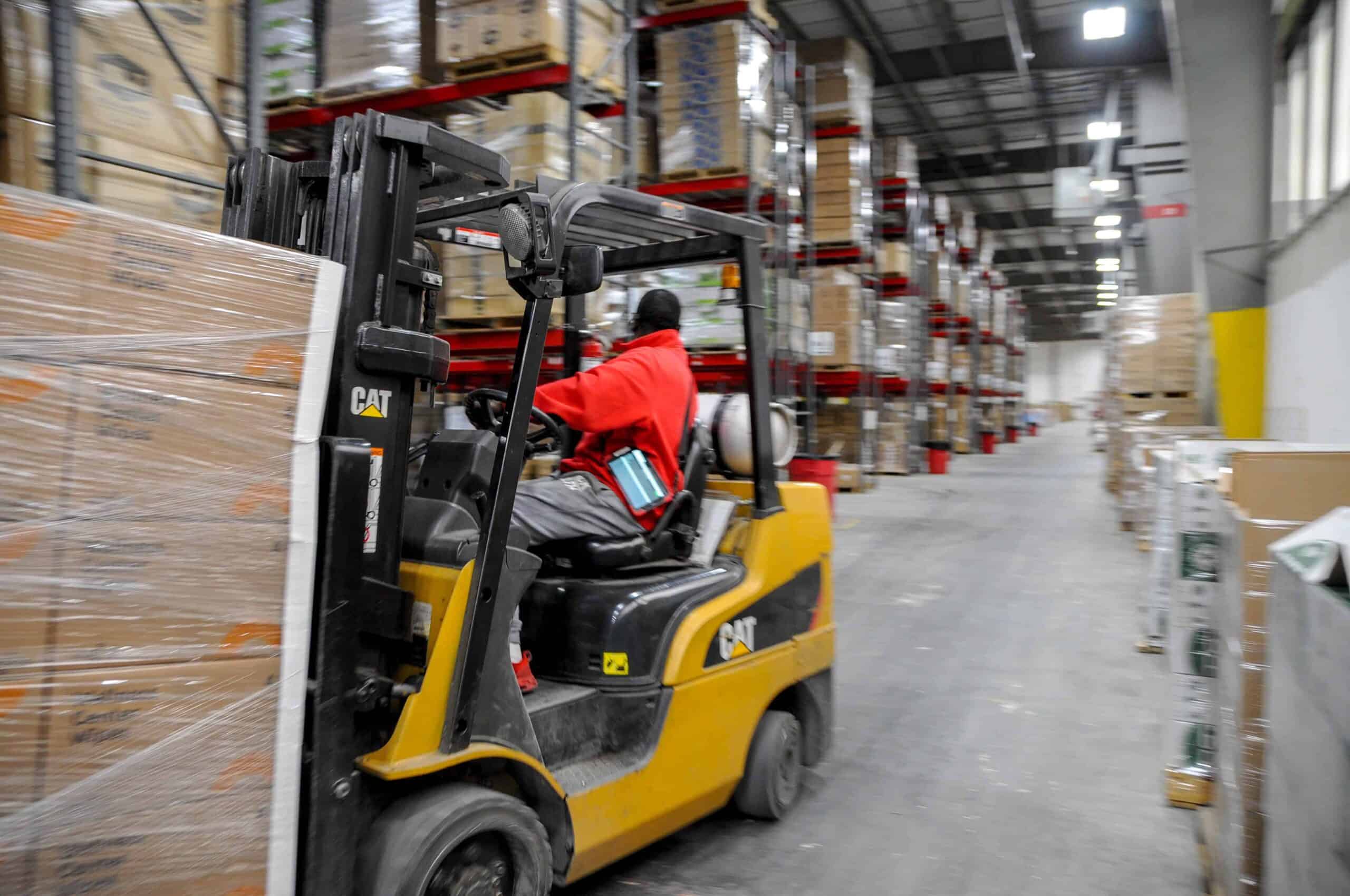The world of eCommerce is growing like never before, and that’s coming with rapid changes, risks, and opportunities. Red Stag Fulfillment’s leadership will take a look at what 2020 brought us and how the lockdowns, store closures, and new Internet opportunities have shaped the way we’re looking at eCommerce and its trends.
The underlying theme in everything is the simple fact that there was no way to plan for the exact event of the COVID-19 pandemic. However, some best practices and business habits did lead to more successful outcomes for our customers and us. They also supported many of the small and booming brands you’re likely buying from right now in another browser tab.
“When black swan events happen, and bad things happen to an economy or business environment, it’s going to magnify the negative impacts of what a company already gets wrong,” said Chris Molitor, Vice President of Business Development at Red Stag Fulfillment. “What COVID taught many eCommerce companies is that when everything is humming along at a standard pace, your small good or bad habits don’t impact operations that much. But, when outside risks increase pressure, or something as big as this happens, your good or bad rapidly compound, and you feel it in every area of operations.”
The 2020 change hit hard and fast. Thankfully, Red Stag and your business could respond due to best practices and arduous work. For 2021, it’s now about shoring up those protections and taking advantage of the new opportunities as the dust clears.
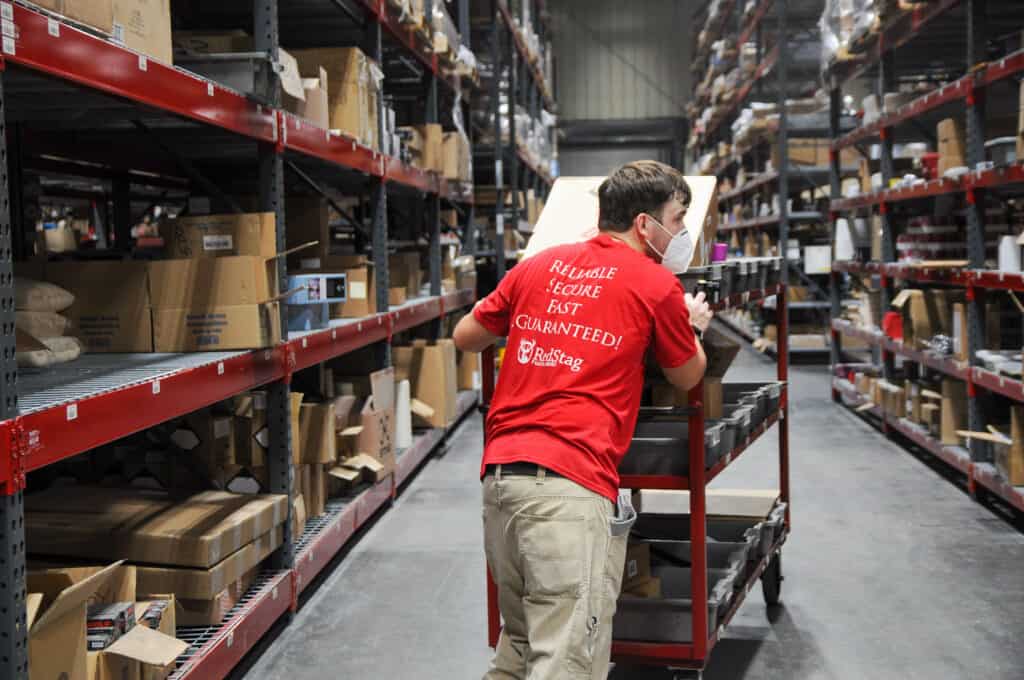
ECommerce Blossoms
When the pandemic hit, economies around the world transitioned. ECommerce grabbed headlines because of its significant shift — in the first half of 2020, U.S. consumers spent $347.26 billion online, up 30.1% from $266.84 billion the year before. McKinsey quantified the rapid expansion as 10 years of eCommerce growth happened in just 90 days, when looking at U.S. eCommerce penetration.
In the first half of 2020, U.S. consumers spent $347.26 billion online, up 30.1% from $266.84 billion the year before.
Around the world, eCommerce grew at unprecedented rates. A majority of U.S. households started shopping online regularly, and this increased as lockdowns and other measures continued.
Understanding this new reality will take time, especially given how wide-reaching some changes are. Here are a few crucial details from 2020:
- Three-quarters of your audience has been impacted economically by the pandemic, increasing how they search for deals while and shifting where they splurge
- Top retailers offering curbside pick rose from 6.9% to 43.7%
- 92% of shoppers used click-and-collect options to pay online and pick up in-store or curbside
- Local businesses are feeling the sales love, and 80% of shoppers in one survey say they feel more connected to neighborhood stores than before
- Cash declined both from businesses trying to avoid it and consumer preference moving to touch-free payments
- 59% of consumers say they’re shopping more health consciously (even before those New Year’s resolutions)
- Work-from-home policies have pushed consumers to buy more goods considered traditional “B2B” products. Apartment complexes in large cities are also spending more like office buildings.
- People are moving, even during a pandemic. Rural and more suburban areas with lower costs of living are seeing the largest increases.
- Consumers are feeling more isolated and turning to digital tools and purchases to help. The “experiences” Millennials prioritized spending on now have greater product involvement.
- Most of your consumers are facing reduced choices, especially from grocers.
Data from eMarketer suggests that North American eCommerce sales grew by 18.1%. The same study found that 2021 will experience mixed growth, slowing to a rate of +7.8% year-over-year, if brick-and-mortar can bounce back. That can feel like a threat to your business at first, but we see it as a potential bright spot.
Losing steam will allow eCommerce companies to catch up with 2020’s demands. You’ll have some extra time to adjust to the new normal flow of your business and opportunities to test the market without having to worry that you’ll get left behind. 2021 gives you a chance to take a breath, look at the state of your operations, create a game plan, and act.
Ongoing Pandemic Lessons
The things businesses were doing right before the pandemic, especially in terms of partners and supply chain flexibility, helped them respond quickly and efficiently. At the same time, errors and waste quickly became an issue as problems compounded.
It laid bare how well-prepared companies were and how much they had in place to respond.
“COVID blew away any planning or projections that companies head going into 2020,” said Tony Runyan, VP of Client Relations at Red Stag Fulfillment. “Even as we move into 2021, there are a lot of guesses about what will happen. We all have learned that there is a limit to what carriers and others have in eCommerce. Companies have to prepare so that losses in availability or freight space won’t cripple them.”
From a supply chain perspective, here are five core takeaways from the 2020 pandemic those eCommerce companies should be putting into place for their 2021 efforts.
1. Say “Thank You” for True Partnerships
The most important takeaway is that every business is dependent on its staff, partners, and customers. We want to take a moment to thank everyone here at Red Stag and all of the people we do business with for how they were able to step up and perform at an unprecedented time.
“We’re always focused on exceeding expectations and working at a heightened level of awareness and capability,” said Chris. “When you have global events like a pandemic, company operations are either magnified for a benefit or a risk. Our commitment and our team are what made this a benefit for our clients and us. We achieved nearly 100% of our SLAs even during the height of COVID, while almost every other fulfillment company around us was dropping the ball.”
By having a team working and reaching out consistently, we could understand our clients’ changing needs. Our clients communicated more than ever during the pandemic, from their local needs to global impacts. We were there to talk about whatever they needed and ensure we had a true partnership – where both parties are looking out for each other’s best interest.
That’s why we talk about our customers as “true partners.” By working together, we’re better able to meet fulfillment needs and help their businesses grow. By sharing with us, they make it easier for us to predict issues and avoid them, managing risk for everyone. We looked out for each other.
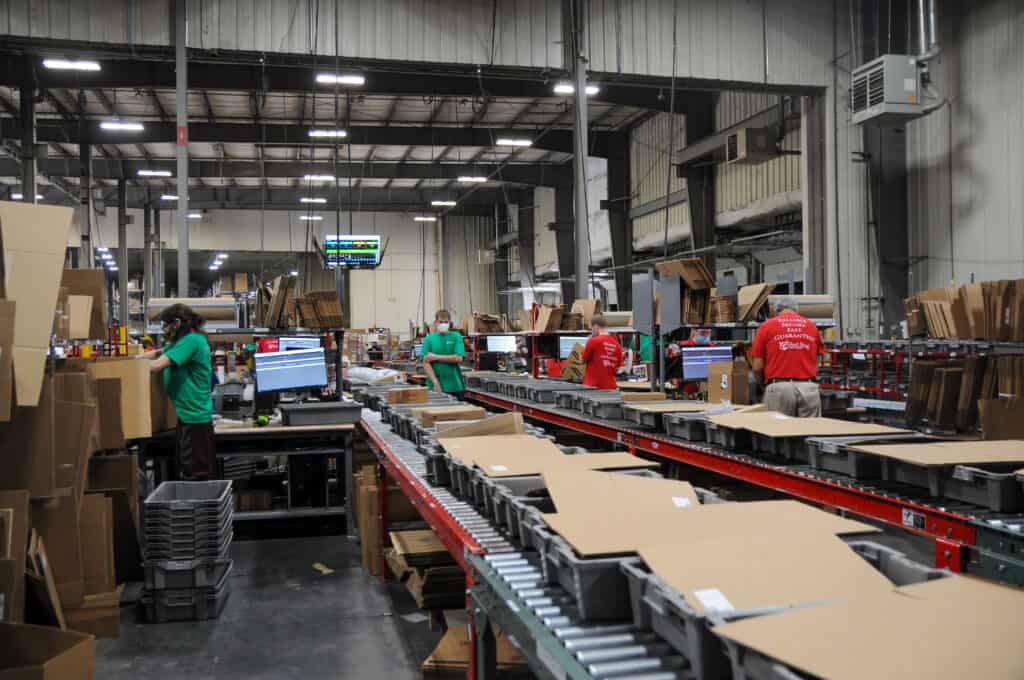
2. Supply Chain Options Should Be in Place Early
Optionality was the most significant need for nearly every company in 2020. The eCommerce companies that had multiple carriers and supply chain partners (or 3PLs with multiple locations) were better able to reach their customers and maintain service levels.
“One of the biggest changes of the year was that eCommerce companies started to realize how significant the benefits are of having a good fulfillment and supply chain partner,” said Chris. “We had a lot of companies reach out to us during the pandemic because they needed support or lost access to existing channels. COVID magnified their need and the risks of not having a backup already in place. They needed help to get back ahead of the curve.”
While Red Stag could help many companies that needed support, other eCommerce companies struggled because they didn’t have options before the pandemic started. Waiting until things had gotten worse or losing access to a partner completely put them at significant risk. It also delayed them in responding because carriers and other logistics companies prioritized the existing clients that they had relationships with already when capacity crunches happened. Securing options now is the best protection for tomorrow.
“We were in a position of trying to give a lot of business to carriers, and they couldn’t take it because they didn’t have the capacity,” said Tony. “It showed the limits of the U.S. transportation network as a whole. Thankfully, Red Stag Fulfillment had multiple carrier partnerships in place, and we were able to scale with demand by working with more carriers and distribution partners.”
Red Stag Fulfillment spent the summer expanding our relationship and work with UPS, allowing us to manage holiday demands. UPS was the carrier that came to the table and helped us get our high volume out — even when other carriers reduced our capacity with minimal notice.
“Now we’re starting to have more conversations with regional carriers to introduce additional backups and fast service. Red Stag is creating these relationships so our customers can benefit from local service and a more diverse set of supply chain partners, but without needing to go find those carriers themselves,” said Tony.
3. Sales Channels Represent Opportunities and Risks
One of the more surprising threats that emerged in 2020 was the narrowing of sales opportunities for some eCommerce businesses. Those that relied on just one method, such as Amazon or their own website, quickly found that they needed to be in more places to make ends meet. If you only sell in one channel and it disappears, you’ve got to scramble to avoid shutting your doors.
Few in the space realized how quickly an entire sales channel could disappear. When a company relied on it for the bulk or entirety of their revenue, they had to scramble and do a lot of foundational work just to get back up and be able to sell. Being stuck like that with no effective branding of your own means you now have to build a customer base from the ground up, which proved too difficult for some businesses during the pandemic.
“Being diversified allows you to control your own destiny; there’s always a benefit to not being beholden to any marketplace or single sales channel,” said Chris. “People were significantly impacted when Amazon decided to change the rules of its marketplace, highlighting just how important it was for some companies to have another sales outlet. Amazon does a respectable job with fulfillment, so these companies needed to not only create new sales channels but also find ways to quickly deliver the shipping speeds and accuracy that Amazon customers were used to getting.”
What we saw was every business doing what it felt it needed to do to survive. For Amazon, that included restricting product sales, inventory levels, and even the goods it would accept in warehouses. What the company needed didn’t necessarily align with what smaller eCommerce sellers needed, highlighting how important it is for companies to have another outlet and why it is smart to consider another distribution option.
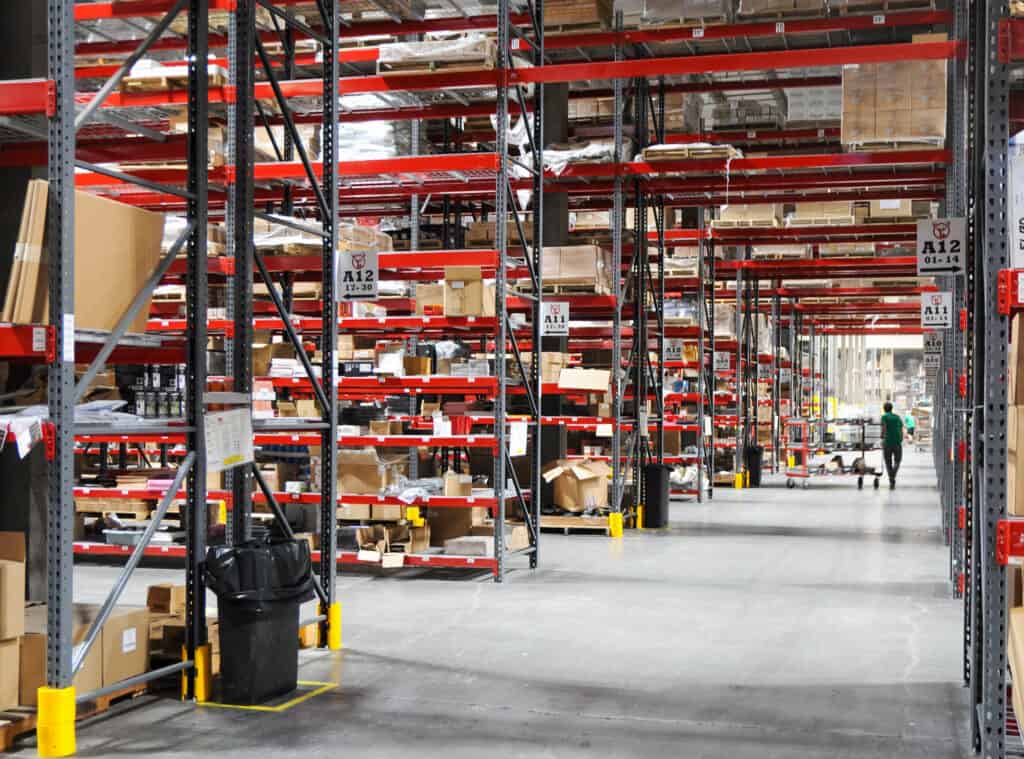
4. Technology Was Behind-the-Scenes
While most years focus on the latest in sales channels and marketing technology, the core 2020 lessons on eCommerce’s tech side were all about customer support and simplicity. Companies that made it easier for consumers to find goods and buy them did well. That builds on past years of social selling and supporting chatbots on your website but includes improvements to user interfaces and other elements that reduced checkout steps.
In terms of revenue, things like supporting backorders when inventory stock runs low were a major lift. However, companies needed the ability to clearly show and explain what was in backorder and the customer service tools to field questions about the status of these items.
People were flexible with interruptions in the supply chain in 2020, but we’re not so sure that your customers will be in 2021. They expect businesses to have fulfillment and inventory issues figured out by now. Tech investments should prioritize managing these concerns and enabling you to make the most of your inventory while addressing as many customer issues as possible before they happen.
Instead of looking for the flashy things that customers see in 2021, consider improving the back end to make buying from your business as effortless as possible. If we see another round of global disruption, that could make you stand out significantly compared to the competition. Invest in the tech that helps you and your supply chain partners do a better job.
5. Retention Reigns as Top Priority in 2021
If you asked us in 2019 what the top consumer demands are in eCommerce, we would’ve said the immediate availability of high-quality goods, competitive prices, and fast and convenient shipping. That’s largely unchanged, and if you focused on these elements are your core success drivers, you had a leg up on the competition during COVID.
You’ve done the challenging work of staying afloat through 2020 and now need to look at who was a loyal customer and how they can be rewarded. At the same time, there’s a need to trim the fat for products, services, and other elements that aren’t supporting your customer growth. We always view this through a fulfillment lens, but that perspective can help you look at the rest of your company and operations, too.
“Look at your margins and ask how they’re being impacted by fulfillment,” said Chris. “ECommerce companies can see a 1% or 2% change in margins due to seasonality or small shifts. If you see changes at a higher multiple, then poor fulfillment is exacerbating problems in your business. It impacts your overall profits. Issues coming from incorrect orders, high returns, or anything a fulfillment partner does wrong, mean that partner is harming your ability to retain customers and drives down the lifetime value of customers.”
Having a provider that helps you meet expectations and won’t change restrictions on a whim will protect your business, cash flow, and revenue. Think of how new fees, inventory level shifts, and the sudden introduction of new requirements can create a risk to your overall profitability. Look instead of someone that stays consistent or makes changes designed to improve your revenue.
The rise of digital technology played a role in improving relationships and retention for us. Red Stag saw it impact how we interacted with customers and how we could leverage it to improve some partnerships when the news of any given day could reshape a supply chain.
“One thing that has been interesting is how our client interactions have changed,” said Tony. “For some clients who we would see in-person once or twice a year, we’re moving to video calls with them once a month or quarter. People are more comfortable with video calls and this has given us a better rapport because we’re able to make a more personal connection. There are probably opportunities for eCommerce companies to do that, too.”
Mastering the 2021 State of Fulfillment
Throughout 2020, it became surprisingly difficult for companies to get their products to customers. Disruptions happened early and often, with little ability to predict. Some companies faced issues with securing container space for ocean freight and ongoing port delays. Others faced local shortages of products and staff when outbreaks occurred. Sometimes, a partner had an illness at a facility that sent ripples up and down the supply chain.
Getting fulfillment correct and keeping it smooth for the end customer became one of the most important competitive differentiators of 2020:
- More than two-thirds of customers want same-day, next-day, and two-day delivery speeds
- Roughly the same will look at free-shipping thresholds before they add anything to a shopping cart.
- Free shipping is among the most in-demand online shopping perk or benefit, with roughly 40% expecting it on two-day shipping.
- More companies are trying to offer free shipping (up 5.3% during the pandemic on the Shopify platform)
- 70% of people (pre-pandemic) who buy online and pick up at a store location do that to avoid paying for shipping.
To meet this demand, companies sought more space. In the first half of 2020, demand for big warehouses soared 51%.
Baby boomers demand free shipping the most, with 88% expecting it. That compares with 77% for Generation X, 61% for millennials, and 76% for Generation Z.
Looking at all of that, Red Stag has a few suggestions for companies who are looking to refresh their fulfillment strategies in 2021. First and foremost, ensure that you have the ability to capture and monitor fulfillment and supply chain data. Without that, you can easily miss the best opportunities for your business.
Speak with your current fulfillment leadership or partner, or contact someone like Red Stag Fulfillment, to see how you can better position goods for 2021. Physically moving goods closer to customers can make their order fulfillment faster and more affordable for you. This is best accomplished with regional warehouses that can reach sizable portions of the U.S. within a single day. You want a partner that is where your current customers are and is growing into more major markets. Eventually, they should also help you with local deliveries for major markets, too.
For obvious reasons, Red Stag supports outsourcing fulfillment in order to increase how well you can support companies. That said, it’s typically a smart investment no matter which 3PL you choose. Generally speaking, they offer more distribution and fulfillment locations, can help you with analytics on customers and orders, minimize costs while giving you access to branded packaging, and are masters at same-day support. When your customers want to pay more to get something faster, that should be open as late in the day as possible. If your current warehouse can’t get it done, consider outsourcing at least part of your fulfillment operation.
We have plenty of other thoughts on returns, backorders, and advanced fulfillment designed to help you out as well. Consider these options through the lenses of what helps your business and what helps your customer.








